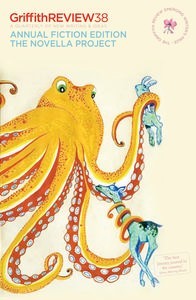 Ideas of what make a story a novella vary. Most definitions centre on length: 17,000-40,000 words, some as low as 10,000. Another characteristic that can distinguish a novella from a short story is added complexity (there is room to develop subplots).
Ideas of what make a story a novella vary. Most definitions centre on length: 17,000-40,000 words, some as low as 10,000. Another characteristic that can distinguish a novella from a short story is added complexity (there is room to develop subplots).
Having said that, the very first piece in the collection, The Water of Life, while being one of the more complex stories (and possibly one of the best), at about 6,500 words, cannot be classed as a novella; it is a short story. This introduction could leave the aficionado of longer stories wondering if they have been short changed. But fear not: the remaining five stories are a minimum of forty pages long.
Glad and Intimate Distance are all or partly set in Australia and have discernible beginning-middle-end structures. Both are absorbing stories examining complex relationships and moral questions.
An End to Hope explores moral questions even more intensively, this time from the viewpoint of a Japanese teenager in wartime Japan. While the story is imaginative in scope with a satisfying arc, it was often difficult reconciling the modern-sounding voice and turns of phrase with the time period.
The final piece is a lively page-turner, more for reasons of style than story. We are inside a junkie's head and he is giving us a procedural on his habit and how he manages it in combination with working as a chef. The voice is fresh, engaging and confronting. The reader who has little idea how less regular lives are led (and how a professional kitchen operates!) will find this story a revelation.
All up, this collection fulfils on its promise of 'gritty tales with unique characters, strongly grounded in place and detail'. More importantly, it is a dynamic slice of what the form has to offer, providing writers with a platform for experimentation to push the form even further.

Comments
Total Comments : ( ) You have to register to post a comment.
RECENT COMMENTS